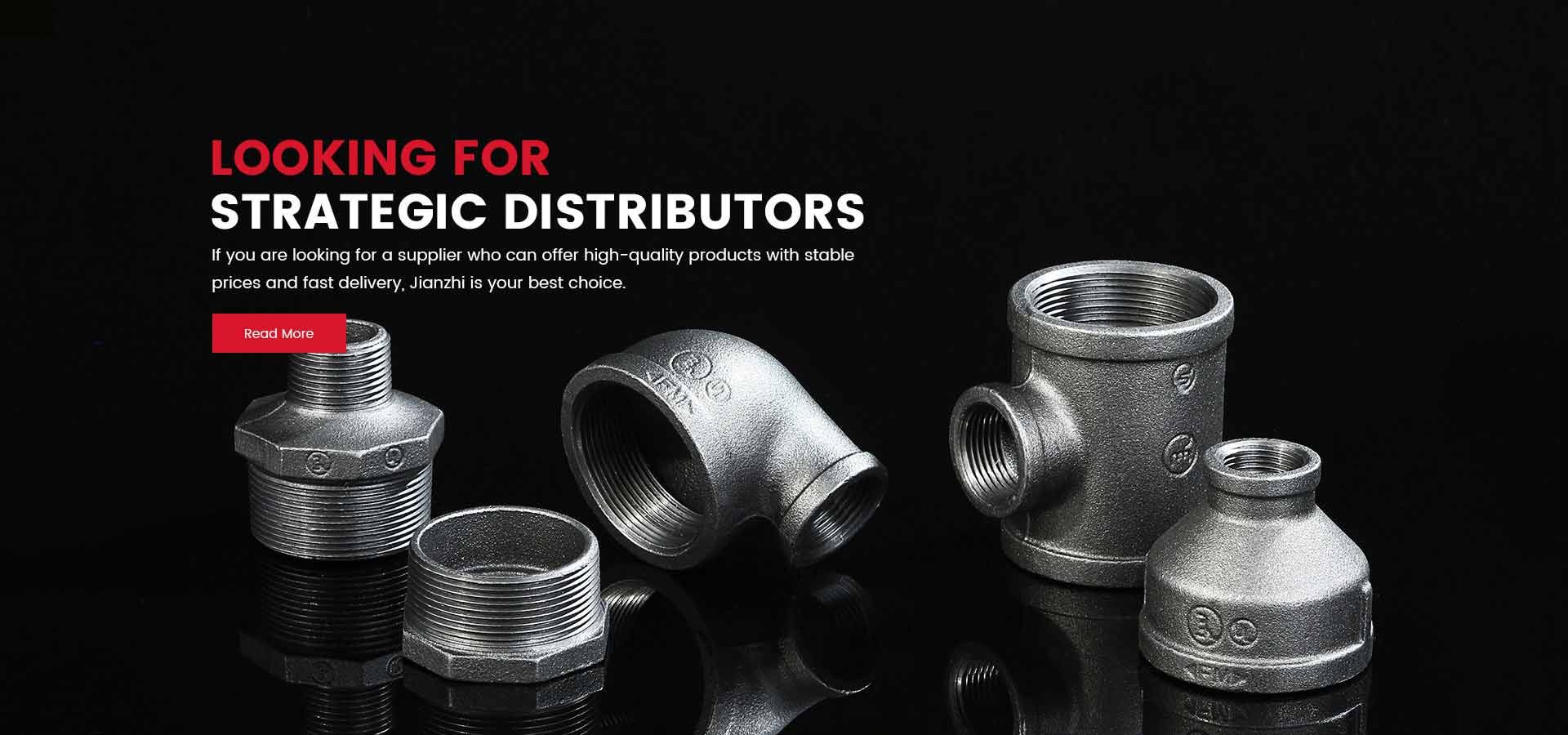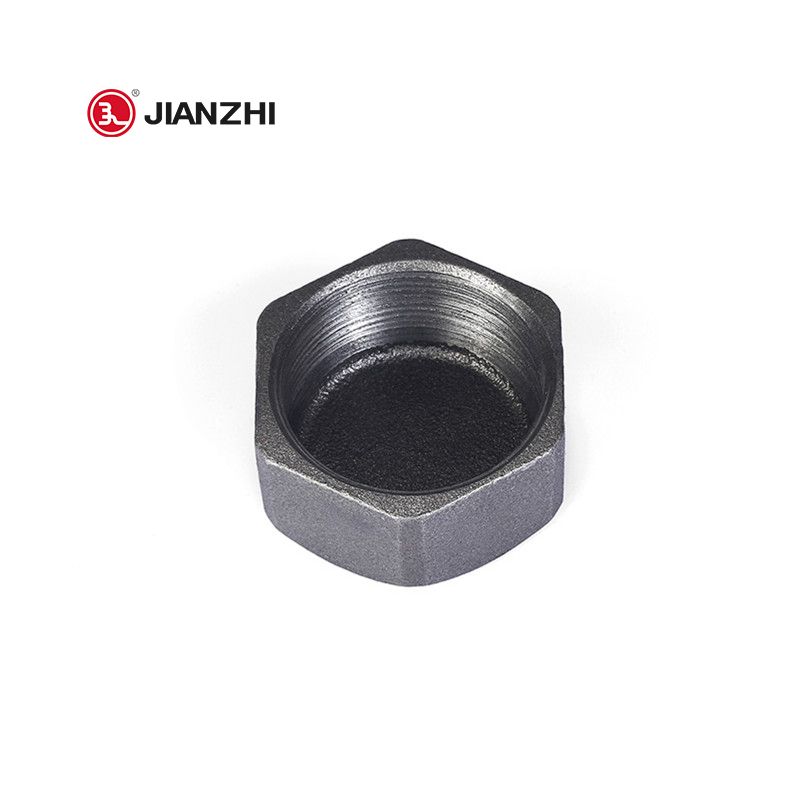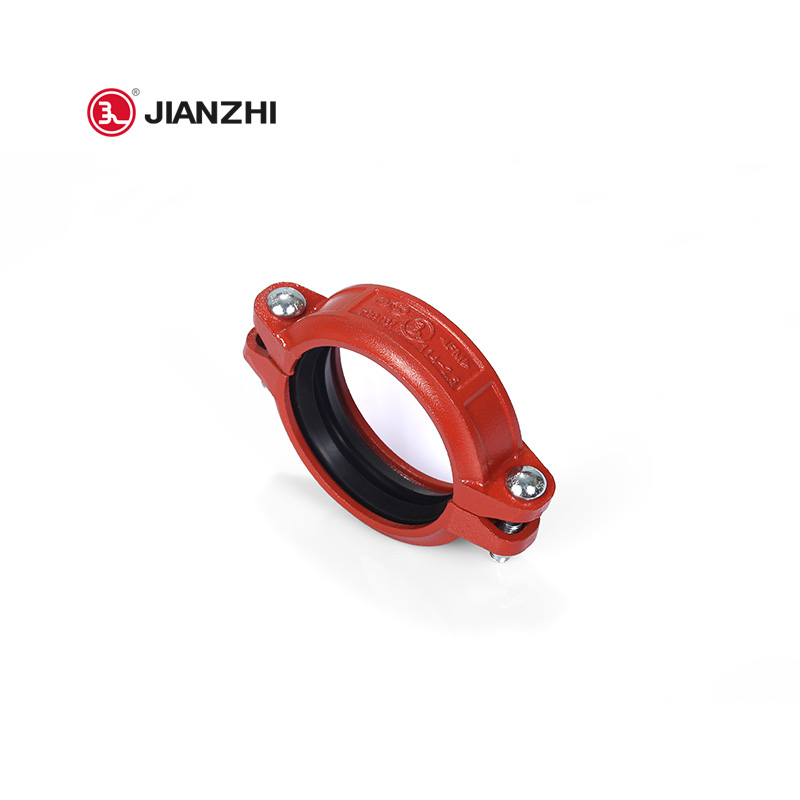What are black steel pipes?Black steel pipes are made of steel that has not been coated with a substrate such as zinc or paint. Since it has a dark color surface that is forms by iron oxide during the manufacturing process, it is called black steel pipe.
What are black steel pipes used for?
Black steel pipes have a variety of use thanks to their strength and needs for little maintenance. They tend to be used for transporting gas and water to rural areas and urban areas or for conduits that protect electrical wiring and deliver high pressure steam and air. In addition, black steel pipes are also used in oil and petroleum industries for piping large quantities of oil through remote areas.
Other uses of black steel pipes include gas distribution inside and outside homes, water wells and sewage systems. However, black steel pipes are never used for transporting potable water due to the fact that they tend to corrode in water and mineral of the pipe will dissolve into the water and clog the line as well.
What are black steel pipes used for?
Steel pipes are produced by two distinct methods that would eventually result in either a welded or seamless pipe. In both methods, raw steel is first cast into a more workable starting form. Then it is made into a pipe by stretching the steel out into a seamless tube or forcing the edges together and sealing them with a weld. The first methods for producing steel pipes were introduced in the early 1800s, and they have steadily evolved into the modern processes today.
Each year, millions of tons of steel pipe are produced. Its versatility makes it the most often used products in the steel industry. Steel pipes can be found in a range of places. Since they are strong, they are used underground for transporting water and gas throughout cities and towns. They are also employed in construction to protect electrical wires. What interesting about steel pipes is that they can be both strong and lightweight. This makes them ideal to be used in the bicycle frame manufacture. Steel pipes can also be found in automobiles, refrigeration units, heating and plumbing systems, flagpoles, street lamps, and medicine to name a few. Pipes have been used for thousands of years. The first use was probably by ancient agriculturalists to divert water from rivers and streams into the fields. It is also suggested that the Chinese used reed pipes for transporting water to desired locations as early as 2000 B.C.
Development of the modern day welded steel pipes can be traced back to the early 1800s. In 1815, William Murdock invented a coal burning lamp system. To fit the entire city of London with these lights, Murdock joined together the barrels from discarded muskets and used this continuous pipeline to transport the coal gas. When his lighting system proved successful there was a greater demand for long metal tubes. To produce enough tubes to meet such demand, a range of inventors set to work on developing new pipe-making processes. An early notable method for producing metal tubes quickly and inexpensively was patented by James Russell in 1824. In this method, he created tubes by joining together opposite edges of a flat iron strip. The metal was first heated until malleable. Then its edges are folded together and welded using a drop hammer. The pipe was finished by passing it through a groove and rolling mill. However, Russell’s method was not used for long because in the following year, Comenius Whitehouse developed a better method for making metal tubes. Called the butt-weld process, his process is the basis for the pipe-making procedures today. In this method, thin sheets of iron were heated and drawn through a cone-shaped opening. As the metal went through the opening, its edges curled up and created a pipe shape. The two ends were welded together to finish the pipe.
Welded pipe is formed by rolling steel strips through a series of grooved rollers that mold the material into a circular shape. Next, the unwedded pipe passes by welding electrodes. These devices seal the two ends of the pipe together. This process in the United States was opened in 1832 in Philadelphia. Gradually, there were some improvements made in the Whitehouse method. John Moon introduced one of the most important innovations in 1911. He suggested the continuous process method in which a manufacturing plant could produce pipe in an unending stream. He built machinery for this specific purpose and many pipe manufacturing facilities adopted it. While the welded tube processes were being developed, a need for seamless metal pipes arouses. Seamless pipes are those that do not have a welded seam. They were first made by drilling a hole through the center of a solid cylinder. This method was developed during the late 1800s. These types of pipes were ideal for bicycle frames because they have thin walls, are lightweight but strong. In 1895, the first plant to produce seamless tubes was built. As bicycle manufacturing gave way to auto manufacturing, seamless tubes were still needed for gasoline and oil lines. This demand was made even greater as larger oil deposits were found.
As early as 1840, ironworkers could already produce seamless tubes. In one method, a hole was drilled through a solid metal, round billet. The billet was then heated and drawn through a series of dies which elongated it to form a pipe. This method was inefficient because it was difficult to drill the hole in the center. This resulted in an uneven pipe with one side being thicker than the other. I n 1888, an improved method was awarded a patent. In this process, the solid billed was cast around a fireproof brick core. When cooled, the brick was removed leaving a hole in the middle. Since then new roller techniques have replaced these methods.
How are black steel pipes different from other types of steel pipes?
Steel pipes are produced by two distinct methods that would eventually result in either a welded or seamless pipe. In both methods, raw steel is first cast into a more workable starting form. Then it is made into a pipe by stretching the steel out into a seamless tube or forcing the edges together and sealing them with a weld. The first methods for producing steel pipes were introduced in the early 1800s, and they have steadily evolved into the modern processes today.
In terms of components: black steel pipes vs. carbon steel pipes
Characteristics of carbon steel pipes
The amount of carbon that steel contains determines its characteristic. Steel is considered as carbon steel when no minimum content is specified or required for chromium, cobalt, niobium, molybdenum, nickel, titanium, tungsten, vanadium or zirconium, or any other elements to be added to obtain a desired alloying effect; when the specified minimum for copper does not exceed 0.4%; or when the maximum content specified for any of the following elements does not exceed the percentages noted: manganese 1.65%, silicon 0.6%, copper 0.6%. The majority of the steel produced globally falls into the category of carbon steel.
(1) in terms of end-use, it can be divided into carbon structural steel, carbon tool steel and easy cutting steel; carbon structural steel is divided into the project building structural steel and machinery manufacturing steel;
(2) in terms of smelting method, it can be divided into open-hearth steel and converter steel;
(3) in terms of the deoxidation method, it can be divided into the boiling steel (F), killed steel (Z), semi-killed steel (b), and special killed steel (TZ);
(4) in terms of the carbon content, it is divided into ultra-high carbon steel (1.00 – 2.00%); high carbon steel (0.60 – 0.99%); medium carbon steel (0.30 – 0.59%); low carbon steel (0.16 – 0.29%); mild carbon steel (0.05 – 0.15%);
(5) in terms of the quality of steel, it is divided into ordinary carbon steel (phosphorus, sulfur, higher), high-quality carbon steel (phosphorus, sulfur, low), high quality steel (phosphorus, sulfur, lower ) and super high quality steel.
Applications of carbon steel pipes
Carbon steel pipe is the earliest to use the largest amount of basic material in the modern industry. The world’s industrial countries, in attempts to increase high strength low alloy steel and alloy steel production, which is also very attention to improving the quality of carbon steel pipe and expanding the range of varieties and use. The proportion of carbon steel pipe production in the country’s’ total output of steel, approximately maintained at about 80%, it is not only widely used in buildings, bridges, railways, vehicles, ships and all kinds of machinery manufacturing industry, but also in the modern petrochemical industry, marine development, has also been heavily used.
How are black steel pipes different from carbon steel pipes?
In general, black steel pipes and carbon steel pipes have almost the same procedures for welding. That is in the case of general welding, but not of some specific application like very cold temperatures. Black steel pipe is not really a specification but rather a generic term used primarily by plumbers to distinguish regular steel pipe from galvanized steel pipe.
Black steel pipes are cast from several grades of ductile or malleable iron, whereas carbon steel pipes are generally welded or seamless. Black steel pipes are used for underground or submerged applications as well as for mainstream pipes and branches subjected to acids. It is also common to use cast iron pipes and fittings for municipal cold-water lines 4″ diameter and above. Commercial die casting is unsuitable for lines subjected to expansion strains, contractions, and vibration unless the pipe is very heavy. It is not suitable for superheated steam or for temperatures above 575 degrees F. Cast iron pipes in underground applications (such as sewer lines) usually have bell and spigot ends whereas exposed pipes usually have flanged ends.
In terms of coating: black steel pipes vs. galvanized steel pipes
Characteristics of galvanized steel pipes
Black and galvanized steel pipes are both made of steel, but galvanized pipes have a zinc coating while black pipes do not. Therefore, galvanized pipes are more expensive and more durable.
How does the galvanization protect steel pipes?
The zinc of galvanized steel pipes serves as a sacrificial layer. It will rust before the steel beneath it, allowing the integrity of the pipe to remain intact for much longer time than regular pipes. Moreover, even if the zinc layer is scratched or damaged, it can still protect the steel beneath it.
How long will galvanized steel pipes last?
The thicker your zinc coating, the longer the pipe lasts. The environment also plays a crucial role in determining the pipe’s life span. If the pipes are placed in highly corrosive conditions, they often last from 50 to 100 years.
Applications of black steel pipes and galvanized steel pipes
Black steel pipes and galvanized steel pipes are the two most common types of pipes used for transporting liquid and gas
Black steel pipes are more likely to erode than galvanized pipes and for this reason, they tend to be used for transporting gas while galvanized pipes for carrying water.
The layer of zinc covering galvanized pipes offers it higher ability of corrosion protection, but as time goes by it can cause the mineral to flake off and block the pipe, which might lead to a burst. Transporting gas by galvanized pipes is therefore dangerous. Instead, it is used for carrying water to supply home and commercial buildings or serves as scaffolding frames thanks to its rust prevention.
In contrast, black steel pipes are uncoated and made without steam. Therefore, it is widely used for transporting gas like propane and natural gas to residential and commercial building. Black steel pipes can also be used for fire sprinkler system since it can prevent fire better than galvanized pipes.
Comparing costs of black steel pipes and galvanized steel pipes
In general, black steel pipes are cheaper than galvanized pipes. It is due to the zinc coating on the galvanized pipes and the manufacturing process. Galvanized fittings also cost more than the fittings used on black steel due to its demand for maintenance.
How to differentiate black steel pipes and galvanized steel pipes?
There are two primary methods to distinguish black steel pipes and galvanized pipes:
First, you can examine the color of the pipe. Black steel pipe is darker than galvanized pipe; it is flat black while galvanized pipe is silver and gray.
And second, galvanized pipes are usually used for water transportation whereas black steel pipe for gas deliver.
Other types of coatings
Depending on the use of the pipe, other types of paints or coatings are used. A range of measures are taken to ensure that the finished steel pipe meets specifications. For instance, X-ray gauges are used to regulate the steel’s thickness. The gauges work by utilizing two X-rays. One ray is directed at a steel of known thickness while the other at the passing steel on the production line. If there is any variance between the two rays, the gauge will automatically trigger a resizing of the rollers to compensate. Pipes are also inspected for defects at the end of the process. One method of testing a pipe is by using a special machine that fills the pipe with water and then increases the pressure to see if it holds.
Knowing the nature of both black steel pipes and galvanized steel pipes, Chinh Dai steel has been adopting advanced technology to supply products of highest quality for our international partners, including Thyssenkrupp and Mitsubishi.
Different types of black steel pipes
In terms of coating: black steel pipes vs. galvanized steel pipes
Characteristics of galvanized steel pipes Black and galvanized steel pipes are both made of steel, but galvanized pipes have a zinc coating while black pipes do not. Therefore, galvanized pipes are more expensive and more durable. How does the galvanization protect steel pipes? The zinc of galvanized steel pipes serves as a sacrificial layer. It will rust before the steel beneath it, allowing the integrity of the pipe to remain intact for much longer time than regular pipes. Moreover, even if the zinc layer is scratched or damaged, it can still protect the steel beneath it. How long will galvanized steel pipes last? The thicker your zinc coating, the longer the pipe lasts. The environment also plays a crucial role in determining the pipe’s life span. If the pipes are placed in highly corrosive conditions, they often last from 50 to 100 years. Applications of black steel pipes and galvanized steel pipes Black steel pipes and galvanized steel pipes are the two most common types of pipes used for transporting liquid and gas.
Black steel pipes are more likely to erode than galvanized pipes and for this reason, they tend to be used for transporting gas while galvanized pipes for carrying water.
The layer of zinc covering galvanized pipes offers it higher ability of corrosion protection, but as time goes by it can cause the mineral to flake off and block the pipe, which might lead to a burst. Transporting gas by galvanized pipes is therefore dangerous. Instead, it is used for carrying water to supply home and commercial buildings or serves as scaffolding frames thanks to its rust prevention.
In contrast, black steel pipes are uncoated and made without steam. Therefore, it is widely used for transporting gas like propane and natural gas to residential and commercial building. Black steel pipes can also be used for fire sprinkler system since it can prevent fire better than galvanized pipes.
Comparing costs of black steel pipes and galvanized steel pipes In general, black steel pipes are cheaper than galvanized pipes. It is due to the zinc coating on the galvanized pipes and the manufacturing process. Galvanized fittings also cost more than the fittings used on black steel due to its demand for maintenance. How to differentiate black steel pipes and galvanized steel pipes? There are two primary methods to distinguish black steel pipes and galvanized pipes:
First, you can examine the color of the pipe. Black steel pipe is darker than galvanized pipe; it is flat black while galvanized pipe is silver and gray.
And second, galvanized pipes are usually used for water transportation whereas black steel pipe for gas deliver.
Other types of coatings Depending on the use of the pipe, other types of paints or coatings are used. A range of measures are taken to ensure that the finished steel pipe meets specifications. For instance, X-ray gauges are used to regulate the steel’s thickness. The gauges work by utilizing two X-rays. One ray is directed at a steel of known thickness while the other at the passing steel on the production line. If there is any variance between the two rays, the gauge will automatically trigger a resizing of the rollers to compensate. Pipes are also inspected for defects at the end of the process. One method of testing a pipe is by using a special machine that fills the pipe with water and then increases the pressure to see if it holds.







